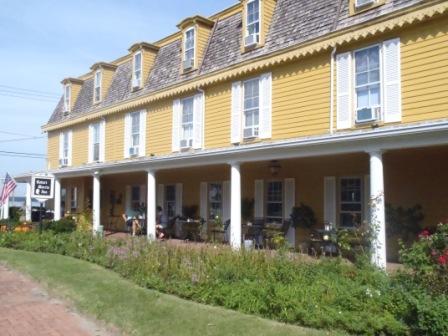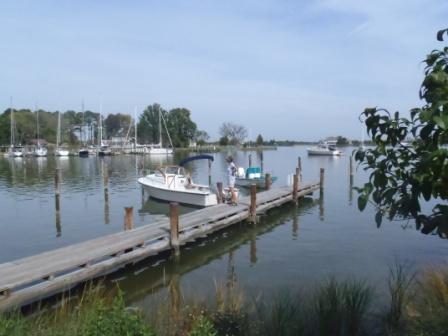St Michael's & Oxford "38:47.29N 76:12.80W"

VulcanSpirit
Richard & Alison Brunstrom
Sun 16 Oct 2011 03:16
|
On the east bank of the Chesapeake lies a number
of immaculately manicured small towns, many with interesting history. Here
is the house of Robert Morris, a very famous American, in Oxford;
 Robert Morris Senior was a very successful merchant
born in Liverpool. He became very rich. Once, on arrival from England with
his son the townsfolk decided to celebrate his safe return with a cannon salute.
Unfortunately the firing cannon broke his arm causing his death. The son
inherited so much money that he was able to bankroll the Revolution - indeed it
was largely his money that enabled its success. Robert Morris Junior signed
the Declaration of Independence, The Articles of Confederation (the precursor to
the Constitution), and the Constitution itself - a true Founding Father. Sitting
on his veranda drinking afternoon tea are Alison and Clive ( a guest of ours).
Oxford, though tiny with a current population of only 700 manages to run a
thriving local museum with, when we visited, a fascinating exhibition on the
King James Bible and its impact on the area), and a public library amongst other
amenities. I don't know how they do it..
Here is a typical tranquil east shore
backwater:
 In a local maritime museum at St Michael's is
a salvaged Screwpile Lighthouse of a type once very common in the shallow waters
of the Bay. The bottom is soft mud so stone structures are impractical. These
screwpiles are the result. Seven iron piles with large flat screw blades on the
bottom are turned into the mud by hand windlass, and a lighthouse built on top
(the apparent lean in the picture is poor camera technique from
me).
 Unfortunately the design was not as successful as
had been hoped, for a very unexpected reason - ice. In exceptionally cold
winters the brackish waters of the Bay can freeze. The ice grips the piles, and
when the tide rises, even though the range is only half a metre or so, the piles
are lifted from the mud sufficiently to cause the whole structure to eventually
become unstable. As a result there is now only one offshore screwpile left in
situ.
|